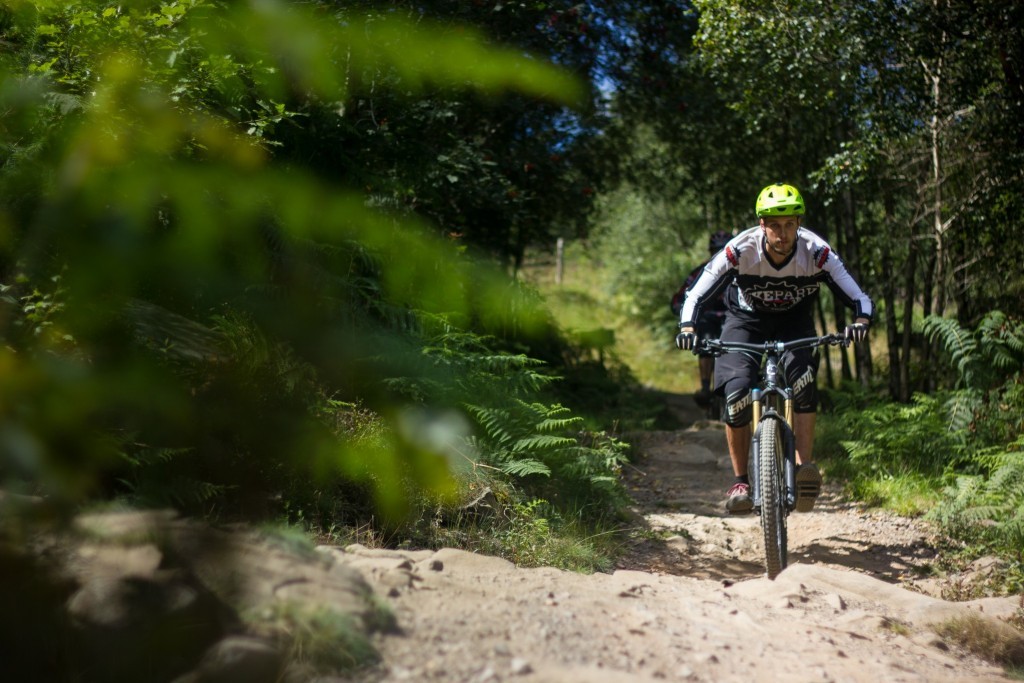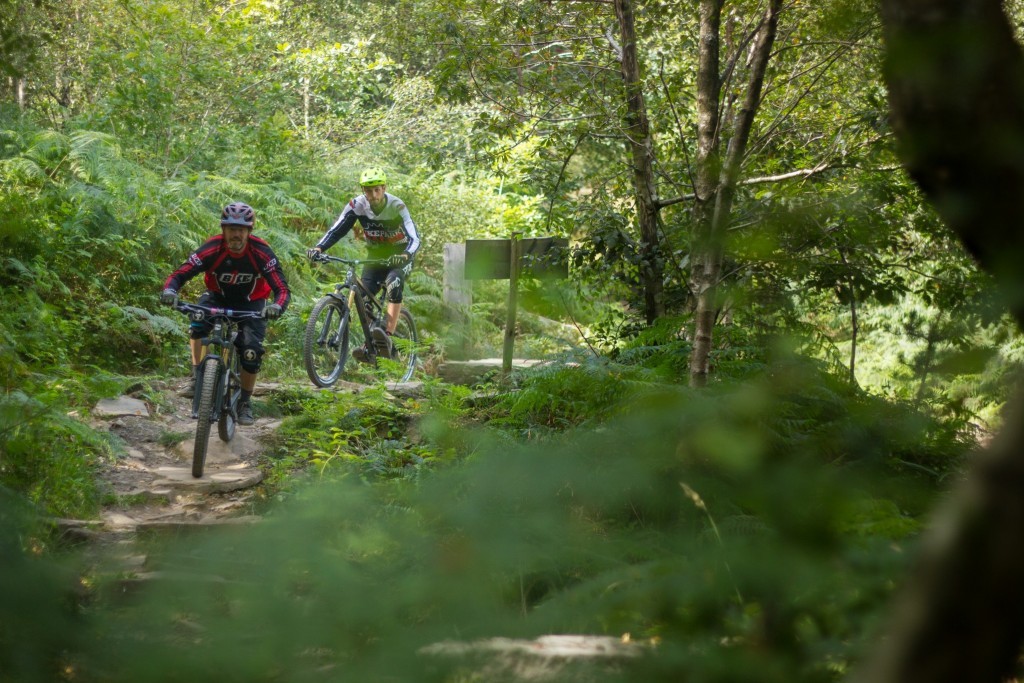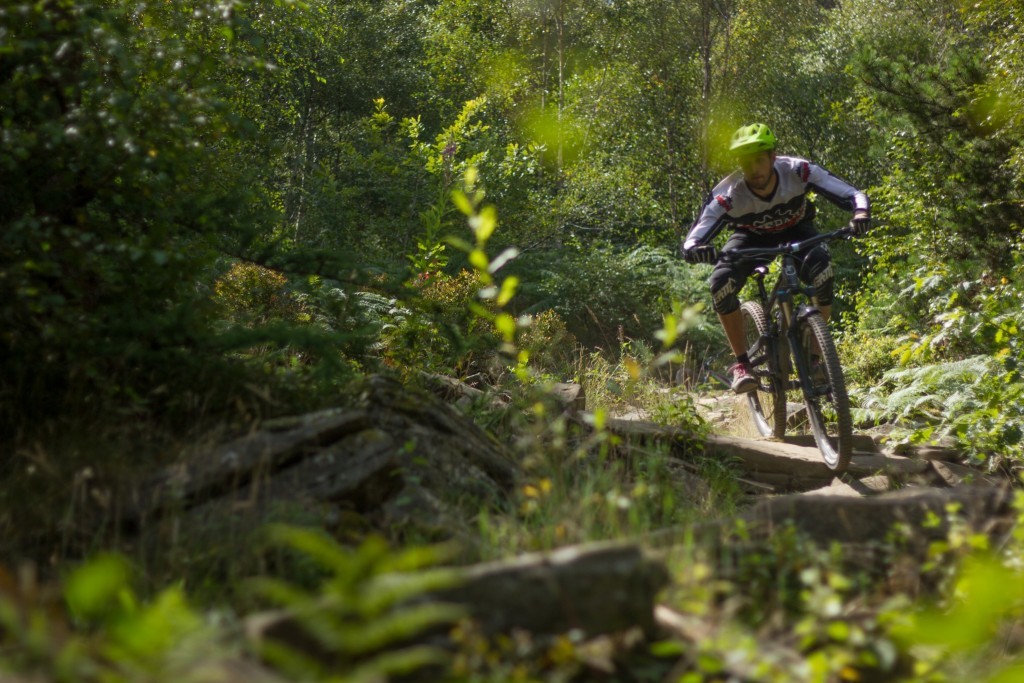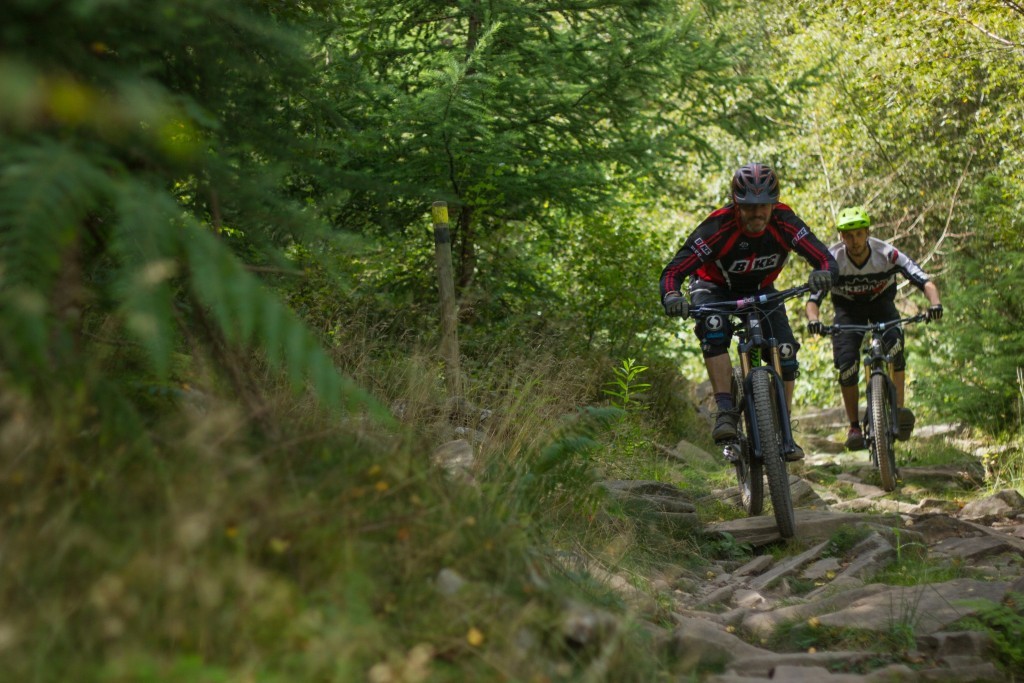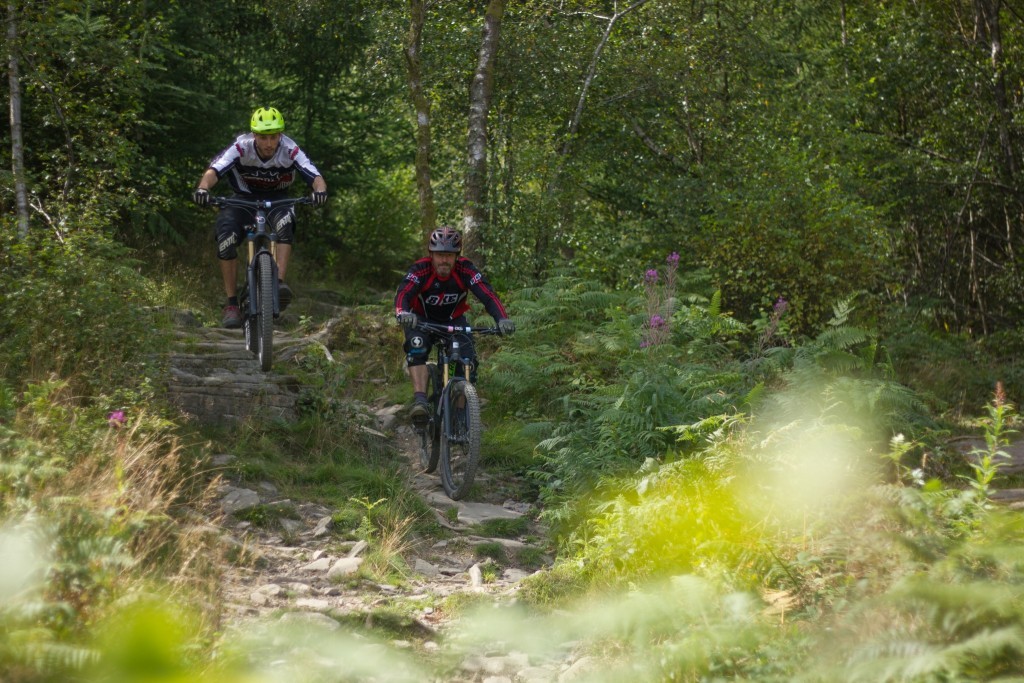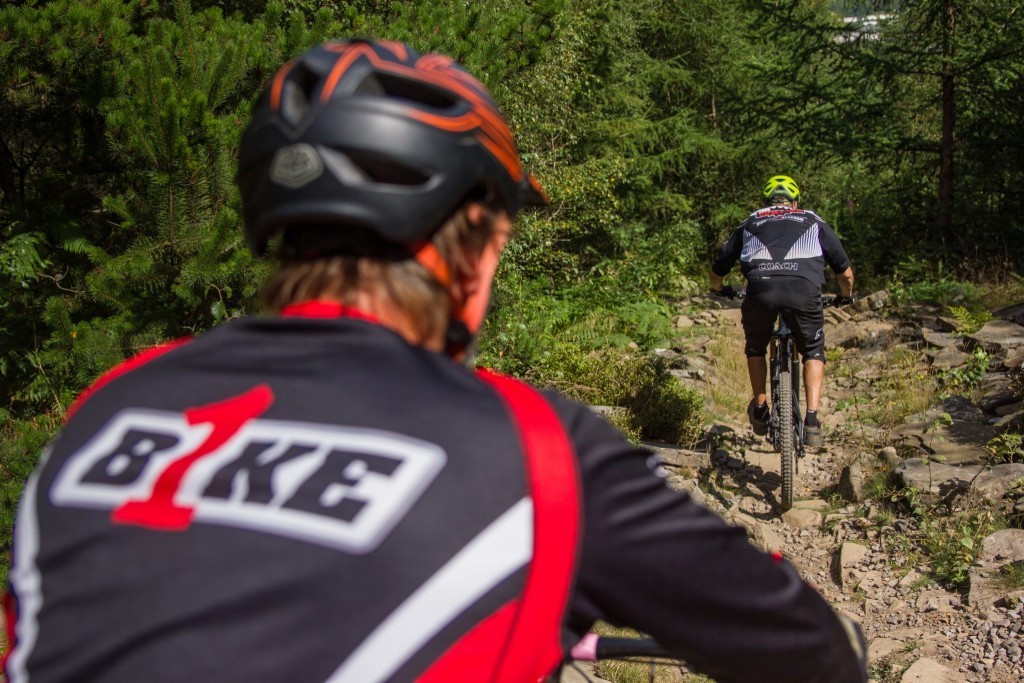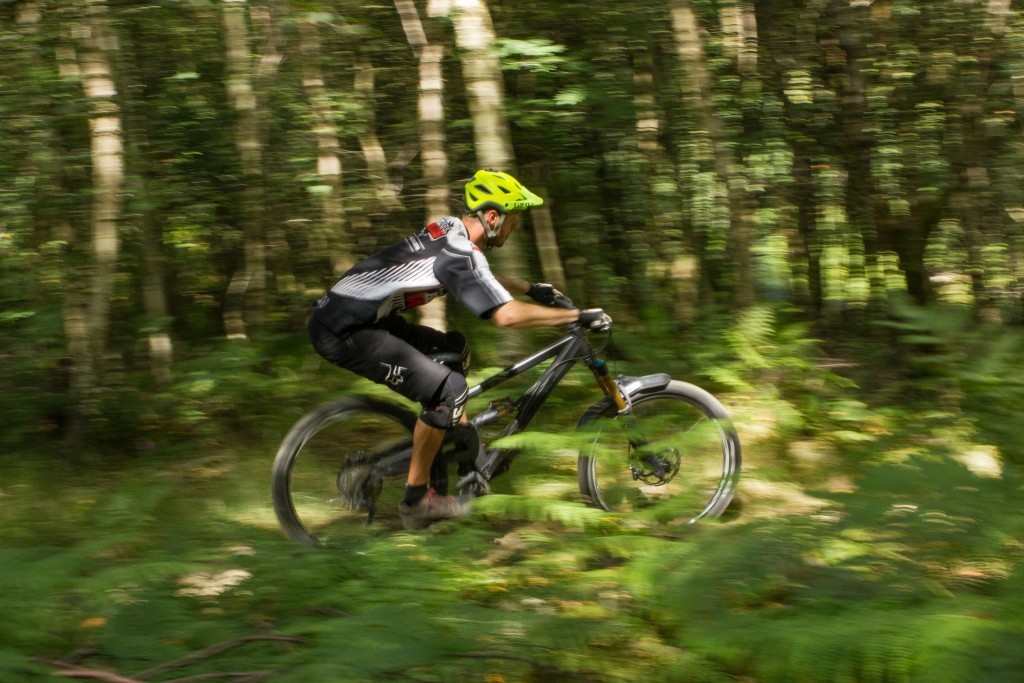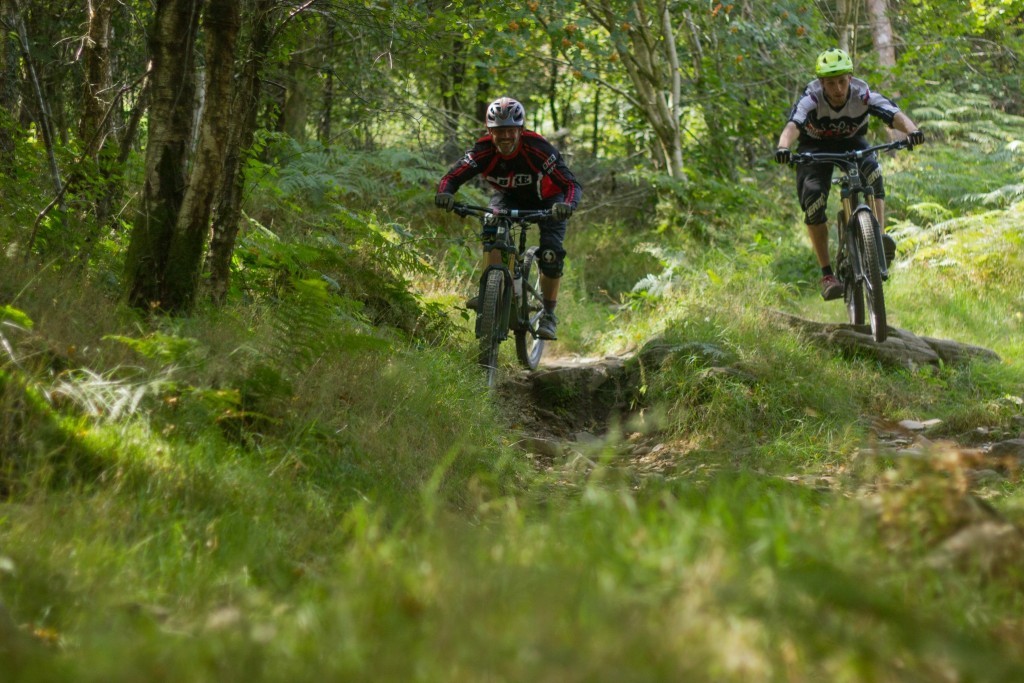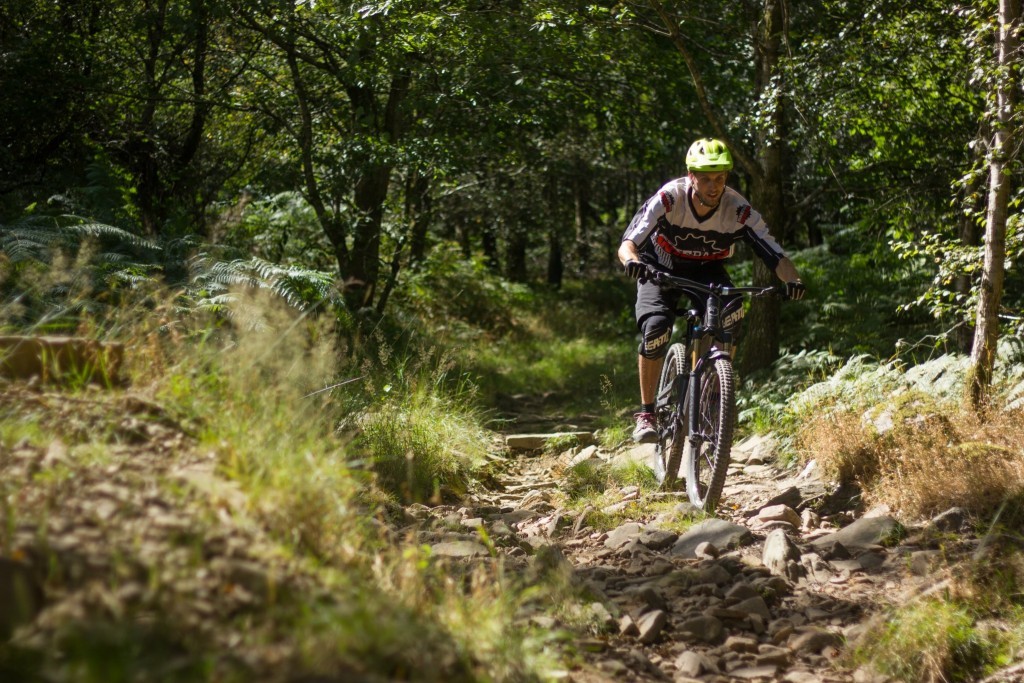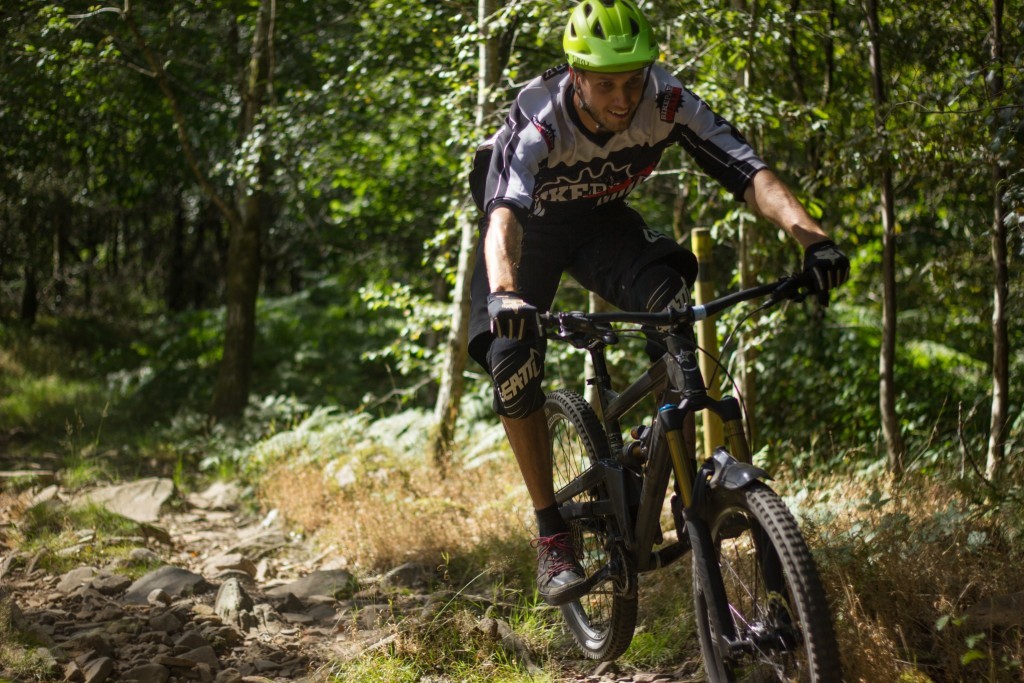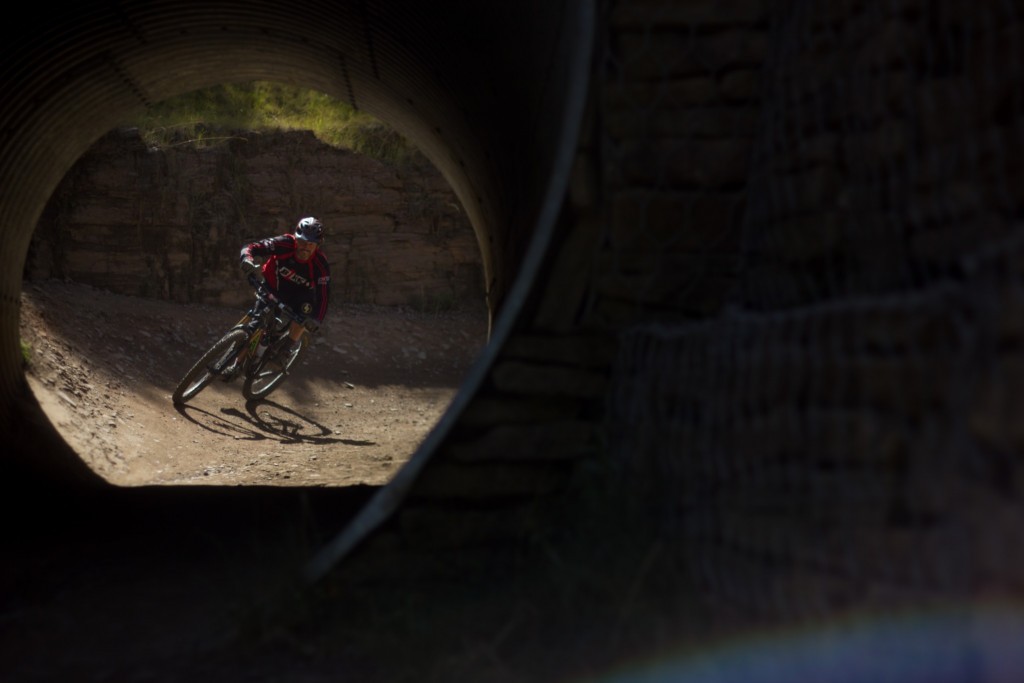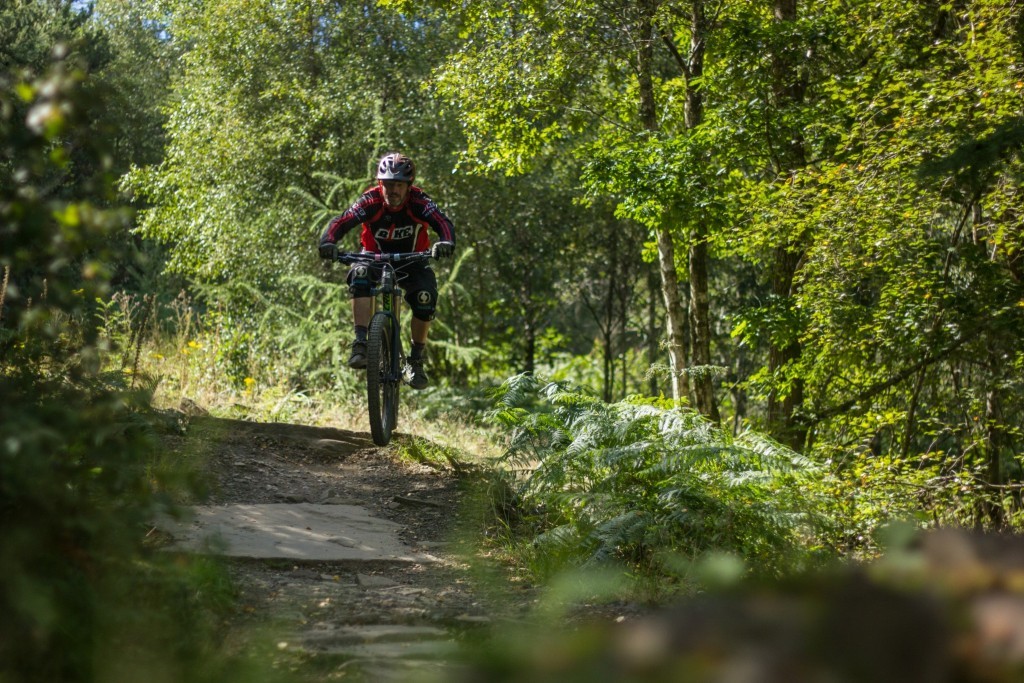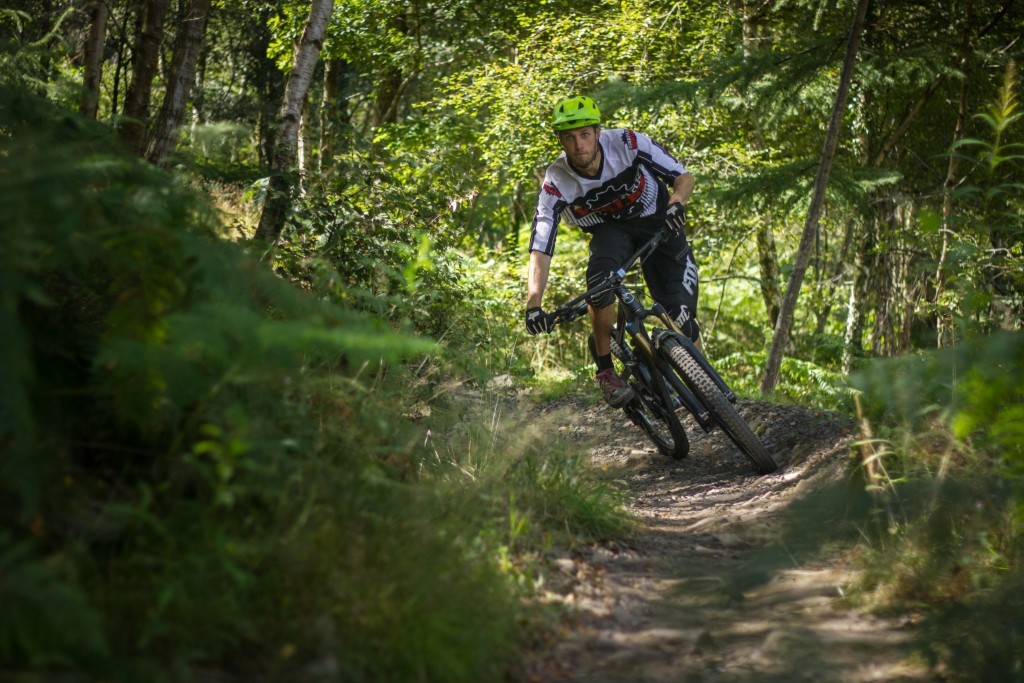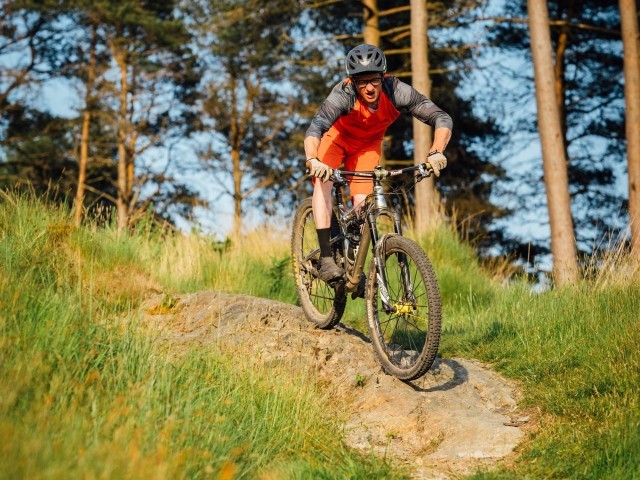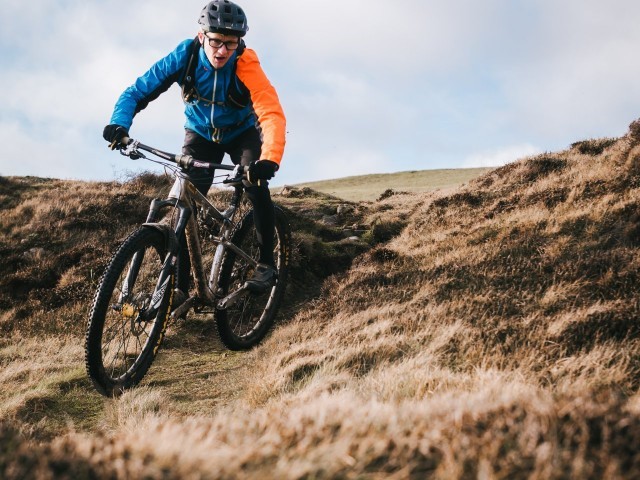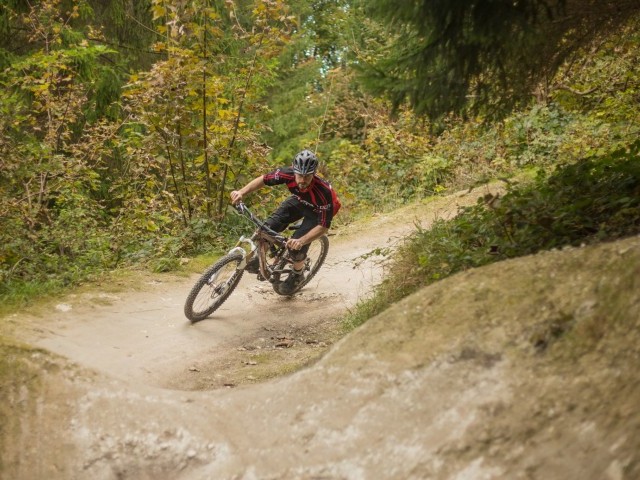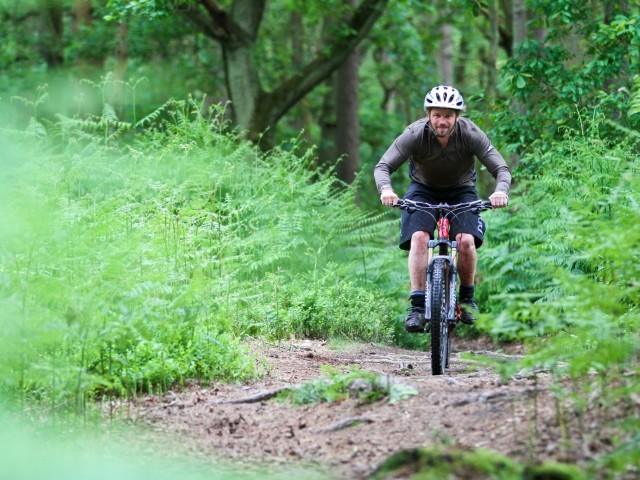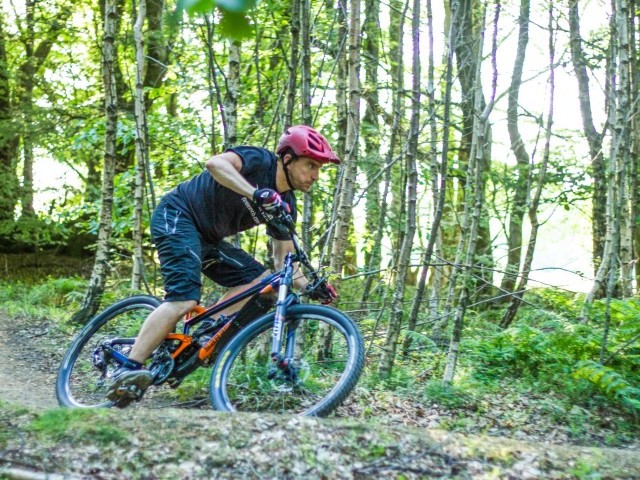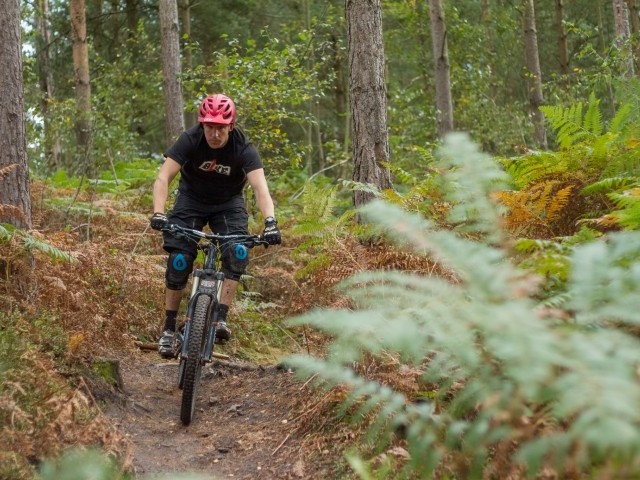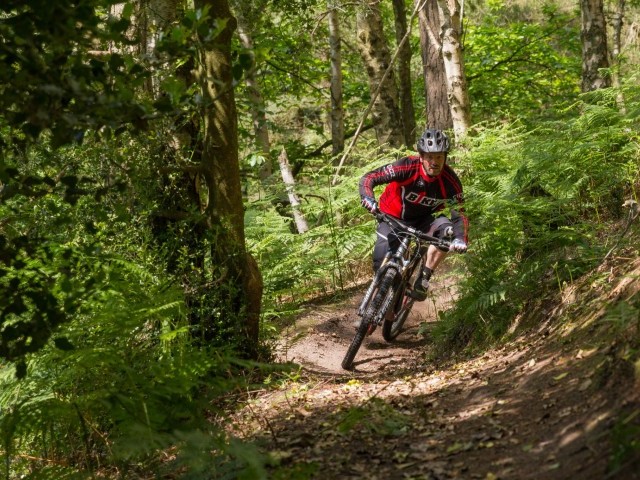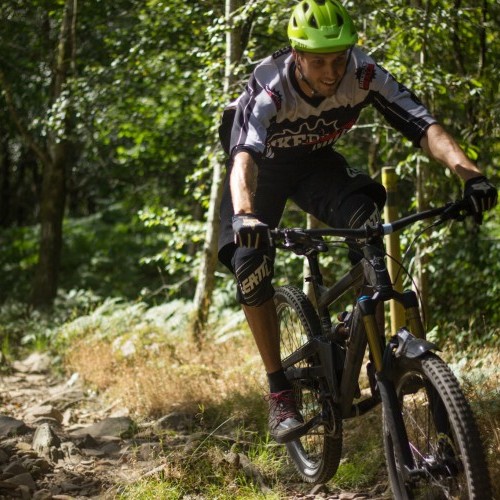
Rock Stars
Technique / Terrain
Introduction
Rocks come in all shapes and sizes from solitary lumps and outcrops to collectives forming gardens of granite. Although for some of us 'home' might mean 'loam,' no matter where you live your journeys on two wheels will eventually ensure that you encounter trails that are made of sterner stuff.
Whether the trail ahead is impregnated with igneous, scattered with sedimentary or a sprawling mass of metamorphic, having the right skills to deal with what lies ahead can make even the most uneven of surfaces a less bone-shaking, rim dinging and head shaking experience.
This issue we take a look at some essential skills and techniques that if applied well will ensure that no matter how hardened the trail features that lie ahead are, you don't allow them to bully you, bounce you, throw you off line, or stop you in your tracks.
Rock gardens that punctuate more technical trails offer an opportunity to test your mettle, your physical skills and your mental stamina. Through identifying some core physical and mental skills we can take a more considered approach than just applying the laws of 'point and hope', but in the first instance, it is important that both you and your equipment are as well prepared as possible for the punch that the trail ahead may pack.
Set Up
As the saying goes, 'failing to prepare is preparing to fail' and although true to a degree whenever we ride, when you are going to be coming up against the hard stuff, this is especially so. Hitting hard lumps repeatedly sends a lot of additional stresses through your bike, and you'll need to check it over and tune it accordingly. The key elements to consider when creating control are your tyres, suspension and cockpit.
As ever with tyre choice, there is a balance to be struck. A wider profile tyre is going to give you more control and tune-ability, allowing you to run a lower the pressure with less threat of a pinch puncture. If you are running a narrow (lower volume) tyre they may need to be harder in order to reduce the risk of the rapid deflation a snake-bite or pinch puncture will cause.
The harder you go the less likely this is to occur but also the less they will contribute to suspension and grip. A good rule of thumb is that your tyres should behave like a begrudging benefactor - they should give a little but not too much. If you are running tubeless tyres, you can run lower pressures without the risk of getting flats, and this can give you a distinct advantage.
That said, go too low, and your tyres will offer too little protection to your rims, and they will get battered quicker than a fillet of cod at busy, seafront chippy. While checking your tyres, it might also be worth running your fingers around the spokes and rim. With spokes that are loose, your wheels will stay true for less time than a politician after polling day. Be a little wary of over tightening them as this can do more harm than good. Your wheel rim should be free of dents and cracks. Small imperfections can become major issues when the forces involved are amplified.
A visual inspection and a little jiggle of any parts attached to your frame is also worth a minute of your time. Levers and shifters that are loose, pedals that are not correctly tightened and pivots that are worn will all get a good working over through rock gardens so check the recommended torque settings and ensure they are met.
Drive trains that are poorly set up will hamper your progress too. There have been many advances in bike tech over the years to ensure your chain stays where it should be when the going gets rough. These can be a worthy upgrade to consider if you want to make sure your chain stays where it should be. Chain guides and clutch mechs will help but checking that your chain is not too long is a cheap and easy place to start. Gear selection once on board is factor to consider as you ride through the rougher stuff too. If you cross chain* you can lose the chain with a single bump. As the sections get rougher and your speed higher you will suffer here if you have too much slack. If you hear a lot of chain clattering into chain stays, you might need to address either your setup or gear selection
Cross chaining - Running the chain on either big ring at the front to big ring at the back or little ring to little ring - the latter being more problematic through the rough stuff.
With wheels, tyres and drivetrain issues addressed. It’s time to think about your bikes set up in terms of how you interact with it. If you are not running a dropper post, you might be best pre-empting the need to let the bike pitch around below you and lower your saddle. The bigger the rock, the larger the clearance you are going to need. Rocks will help create a powerful 'push', and a saddle that is too high will not allow you to deal with it or keep your body in the right place.
Another aspect to consider, which has potentially just as much influence over maintaining correct body position, (especially the upper body) is your brake lever position. Angling your brake levers up will help promote a dropped wrist and mean even on the steepest of sections your mass is encouraged to push down and through the bike (under-rotation) rather than up and over the bars (over-rotation).
You may well be needing the brakes and having to roll your wrists forwards in order to reach the levers is sowing the seeds not of success, but of sorrow. We are not talking pitching them to a position where they are horizontal, just to a spot where they can comfortably be applied while maintaining a dropped wrist.
As well as your saddle you might do well to take a look at the other contact points. If you are running 'clipless' pedals make sure cleats are not overly worn, or the cleat itself wound off so it is too loose. Although you may feel more comfortable knowing you can quickly put a foot down this is rarely a good idea in the middle of a rock garden where ankles can be rolled more easily than a 29'er on a fire road.
If riding with flat pedals inspect your pins and try and ensure your footwear has as flat a sole as possible. Creating as stable a platform as possible when the going gets rough is your goal. Slipping off your pedals midsection will leave you bouncing around on the saddle at best (or the crossbar in more extreme scenarios).
If your handlebar grips are worn, it is common to end up gripping on more tightly to the bars. Strangling the bars in this way will amplify inputs and lead to shockwaves permeating right through you rather than being neutralised. If you can't find purchase on either grips or pedals it’s probably time to buy a replacement set of either or both.
The final aspect of set up is your suspension. Your tyre pressure will afford you some assistance when it comes to dealing with the inputs from below. A correct physical and mental approach will also contribute to your ability to deal with the forces that are created. However, you've no doubt paid a premium for the presence of plush forks and possibly a rear shock too, so make the most of it and tweak it to match the terrain.
You neither want it packing down mid section or firing back at you too fast. Adjusting your rebound dampening will enable you to find the sweet spot. In terms of compression running too little air or too soft a spring will lead to your suspension bottoming out too quickly and frequently. Too highly pressured, and you won't begin to get close to feeling it's true benefit except with the biggest of hits.
The Physical Skills
With a bike that is primed its time to think about what part you as the rider can play in mastering terrain that at first sight may appear threatening. Here lies the first fundamental issue - Looking. Approaching an individual boulder or rock slab it is easy to fixate on the entry point, which is rapidly approaching. The squarer the edge and the more proudly it protrudes, the more it can suck your vision down.
Your sense of time perception changes as the brain perceives you are running out of time and as a rider, we can start to get flustered and more threatened. The more you look down and the closer it gets, the faster you may perceive your speed to be. As with many other similar situations lifting the eyes up and looking through to the exit of the section will have a myriad of benefits.
Things will slow down; your upper body will remain above your hips more and help keep you in a position to drive energy through the bike and overcome any 'push' that accompanies the bike suddenly decelerating. Your front wheel will be lighter as your overall position is more centred, and the perceived size and scale of the task at hand will diminish - added to which you will be able to start to decide what is 'next' and prepare your required responses sooner.
The further ahead, down the trail, you can look the slower things will seem to be happening and the more time you have to plan your line choice. Realistically we know that you may from time to time look down. Don't beat yourself up if you do but try and reduce both frequency and amount of time you fixate on any individual potential problem. With a whole rock garden spreading out in front of you the visual cues' are strong.
Every edge of individual rock can shout out at you to look down and in - keep bouncing those eyes back up and look down less often and or for less time. It is, of course, true we want to make some decisions about line choice, but we need to do that as we approach the entry point to the section not once we are in it.
This all starts by knowing where the exit point is. Once you have looked through to the exit point, if you do drop your eyes momentarily, you will at least have a point of reference to look immediately to when you lift them back up. Don't get hooked up looking from one rock to the next - you will be blasted with too much information too late to process it, and you will start to tense up, hold your breath or decelerate just when you need to be doing the exact opposite.
If you look in a jerky, 'join the dots,' incremental fashion, your progress through the section is likely to reflect the same attributes. The more faces there are to look at the more processing we are asking our brains to do, and they will reach a point of overload. As well as looking down into the individual rocks we may also be faced with sections ahead where the trail becomes unsighted.
Something as small as a 4" step might not allow you to see what is beyond. When faced by this it is easy to start to tense and keep looking down until we can see the exact size of the step we are about to encounter. By the time we can see this we are left with little time to act. Regardless of the scale of the step-down, we are going to do the same thing to a greater or lesser degree, so get on with preparing to do it not worrying about the exact size of the step ahead.
Your body position is crucial when carrying speed and creating flow through any section but especially true when the inputs to the bike are coming in thick and fast. You haven't got time to recover from every push forward that you might get before the next one hits. Once again it is a case of applying a generic approach and sticking with the programme.
There only needs to be a plan A...if there is a plan B, let it be, 'refer to plan A'. Sitting into the bike with a dropped heel and wrist keep your arms and legs a little bent ready to absorb and then push back against the bike as your wheels roll up an over each rock edge. Sat just behind the centre line in what we call 'the pocket' our mass and momentum will be positioned to drive the bike rather than overtake it.
Every time the bike begins to stall you can push through the pedals with a dropped heel and through the bars with a dropped wrist to keep the bike accelerating and offset the 'push' that occurs when your body mass is driven forward faster than the bike is travelling. It is easy for the upper body to let you down here.
The momentum of your upper body being pushed forward towards bar and stem as the bike bucks can pull you out of shape rapidly. Keeping your chest up and shoulders slightly back will help dramatically in keeping your body where you want it and not letting it get pushed. Think about more bend at the knee than the waist. If a trail commands, respect, think courtesy, not a bow. By doing this, you will find it easier to stay in the pocket.
'Energy management' & pumping through the sections is also essential. The uneven nature of rock gardens offers more resistance to the rolling wheel, but it is not a uniform resistance, and we must continually respond to the bikes need to rise and fall below us in order to remain smooth. The bike may be taking a royal beating but using good energy management skills your body shouldn't take the same.
As you develop these skills, you can start to see the rocks ahead in terms of a series of transitions. There are plenty of opportunities not just to suck up the bumps but actively pump into the transitions and generate speed. When we start to think in this way we are no longer faced with a series of problems but a series of opportunities. Using the rocks to your advantage in this way will open up more in the way of line choices.
Mental Game
It is all very well knowing what you should be doing but the ability to apply the correct skills at the right time is reliant on keeping a cool head (control) and resisting the 'flight and fight' responses that may start to creep in as the going gets tough.
We have already identified how looking down can initiate a downward spiral in terms of confidence. The physical manifestations of our response to fear can amplify things and further contribute to that downward spiral. When we feel under threat, it is easy to tense core muscles stifling our ability to move freely to deal with inputs.
Breath holding is common, tensing the core muscles and in turn you arms and legs. Death gripping the bars adds further to this. You need to stay loose. Committing to your skills set and the section are critical. Avoid thinking to a point but rather think through it. Try and keep the brain well ahead of the bike, concentration. Dithering and self-doubt will not contribute to success.
For sure you may need to make adjustments as you ride trough the section, but these in the main should be pre-planned. Confidence cannot be injected or imbibed through some magic elixir but will build if you set things up correctly. Knowing that you are applying best practice and doing all you can, will help you in sticking with the programme, commitment. Combining the four 'C's' of the psychological skills set is crucial.
Like any section of trail, we should understand them in terms of performance cues. Visual ones, we must look through. Input cues that we must use good energy management and pump through and Performance cue waiting...the ones we fear...we must think through.
Through combining the Personal Skills (Setup), Physical Skills and Psychological Skills, we can create a stable platform from which to operate, a blueprint for success. Things won’t come crashing down if we make small errors and as ever it is a case of seeking to perform at 'optimal' rather than simply 'Maximal'.
With the right approach and a little practice, you will start to see and feel differently about the bumpier sections. The more aspects of the system you apply, the better you will feel, and so the 'upward' spiral will begin. The better you feel, the more relaxed and more emotionally controlled you will remain. This, in turn, will promote a freer body movement to deal with the inputs ahead. Pretty soon you might adopt a similar mindset to Forrest Gump and like him conclude that
"Sometimes. I guess there just aren't enough rocks".
Happy riding and don't forget to get in touch if you would like some first-hand training.
This technique article was in Issue 43 of IMB.
Related
By Richard Kelly
Richard Kelly has been riding bikes since forever, and teaching people to become better mountain bikers for over a decade. He’s always out in the Surrey Hills training riders, building trails and riding for himself whenever he gets the chance. His unique perspective on mountain bike technique has earned him fans the world over, with some speculating he is actually Jamiroquai or perhaps Jack Sparrow…






